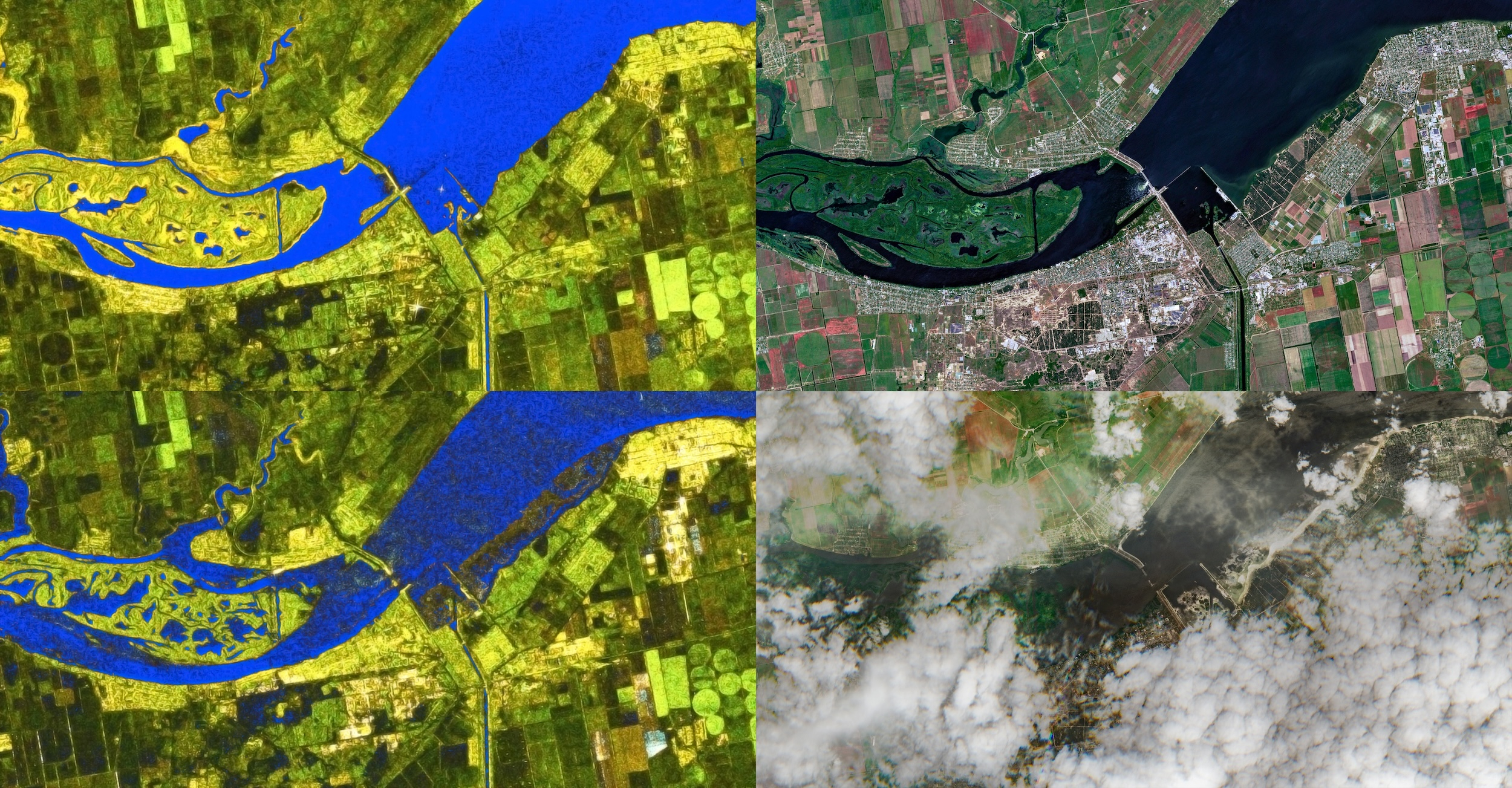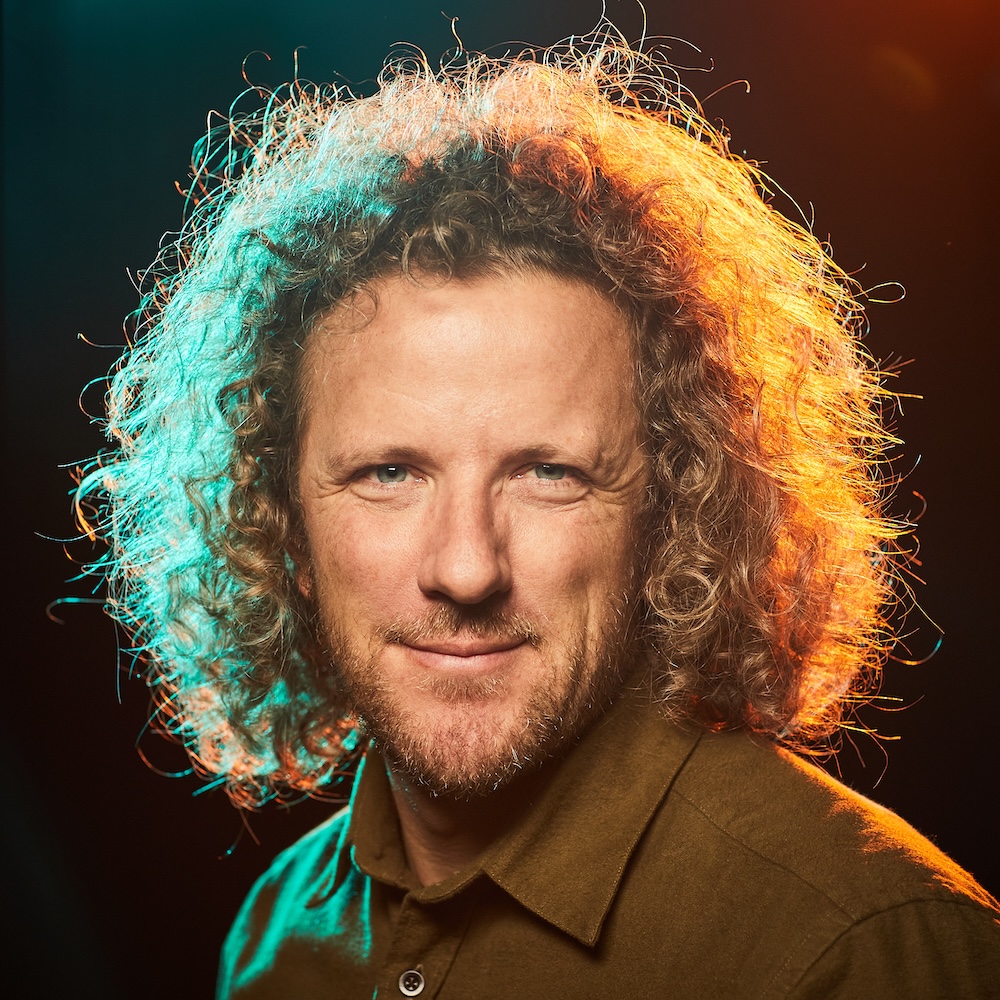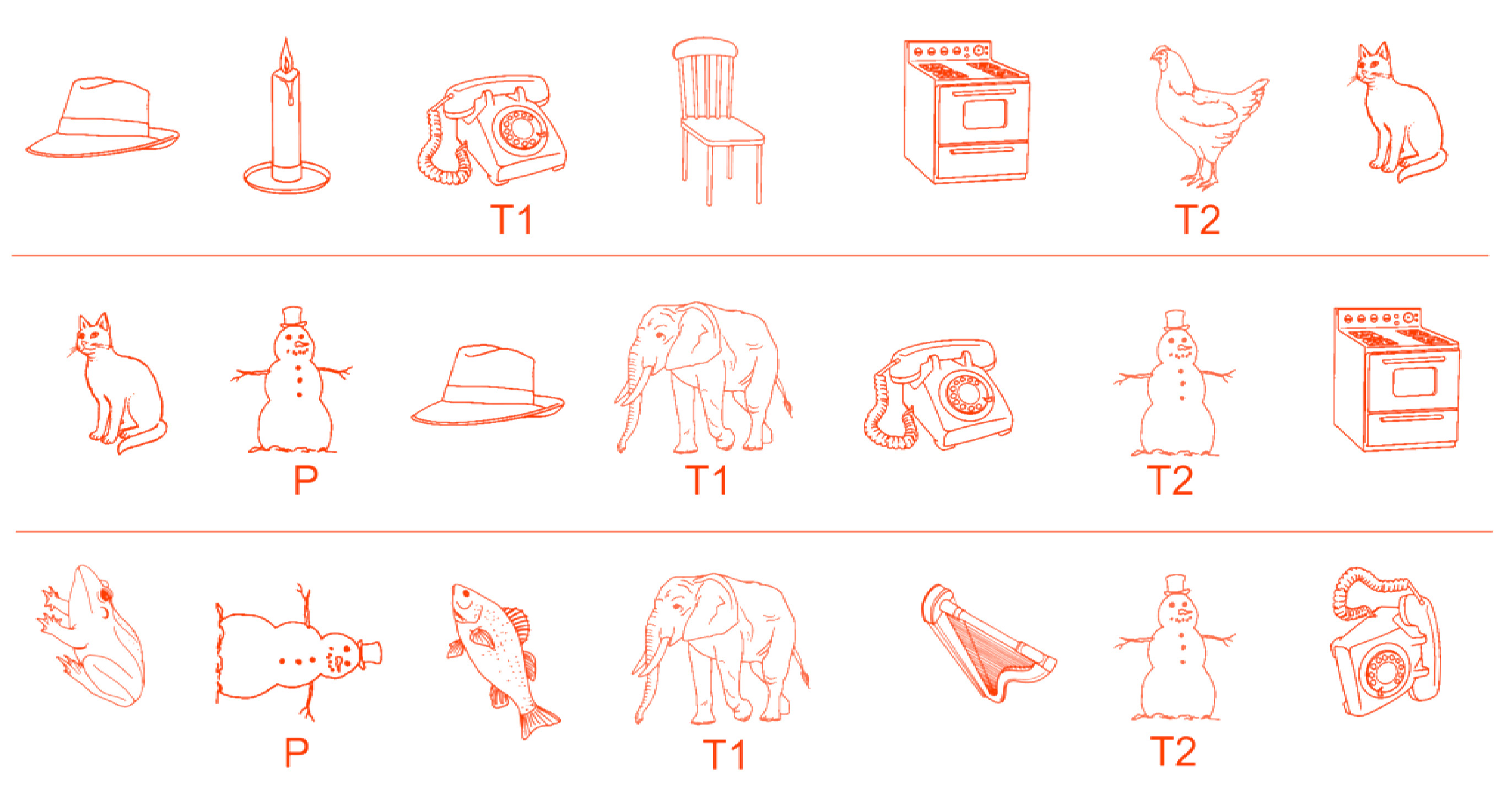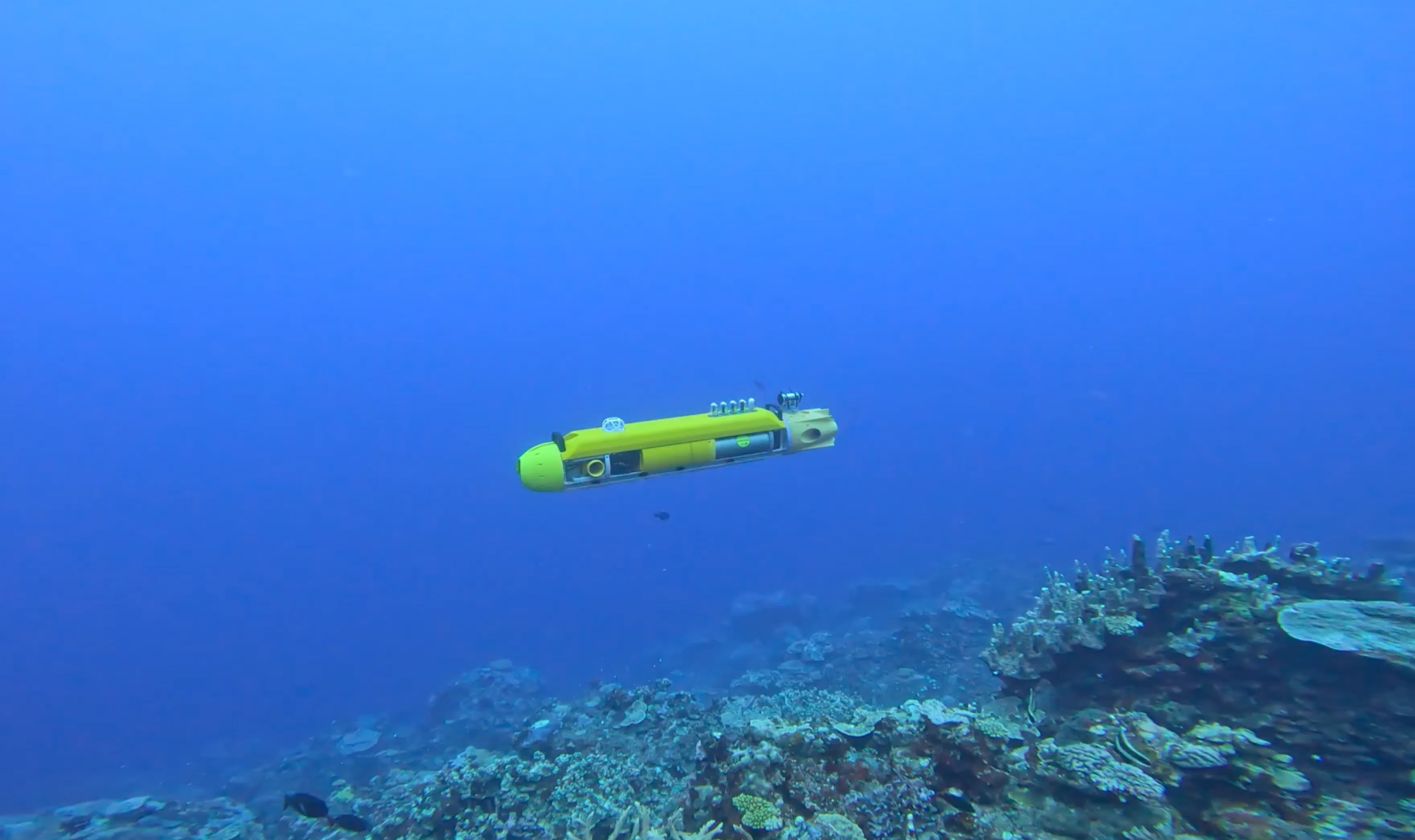Visualities of destruction: war and ecocide at Kakhovka Dam

A seminar on the emerging visual regimes of destruction in contemporary wars, focusing on the 2023 destruction of the Kakhovka Dam in Ukraine’s South by the invading Russian army.
Kakhovka Dam, Ukraine, before and after its June 6th 2023 destruction. Left top: Sentinel-1, 1 June 2023. Left bottom: Sentinel-1, 9 June 2023. Right top: Sentinel-2, 5 June 2023. Right bottom: Sentinel-2, 8 June 2023. Contains modified Copernicus Sentinel data (2023), processed by Pierre Markuse.
This event is the fourth in our 2025 series Vision Cultures, which explores the political, scientific and art historical stakes of vision in the 21st century. This session will feature presentations by media scholars Olga Boichak and Michael Richardson, with a response from art historian Ann Elias.
Wartime destruction has traditionally been framed in anthropocentric terms and quantified in terms of its damage on human life and property (Knittel, 2023). Yet, the last decade has witnessed the ‘ecological turn’ in the cultural imaginaries of wartime violence, drawing the links between crimes against humanity and crimes against the environment (Crook & Short, 2014). Large-scale infrastructural projects, such as dams, often become prominent sites for such violence - built in the service of colonialism, they evoke and represent complex histories of erasure and dispossession in the course of their destruction. In this presentation, we focus on one such prominent episode: the destruction of the Kakhovka Dam in Ukraine’s South by the invading Russian army. Unlike its historical precursors, the destruction of this dam has been amply documented online, turning social media into a rich visual site to witness these events in real time at scale. Investigating the convergence of the “fast”, kinetic violence with the “slow” environmental devastation, we map the emerging regimes of visualities of destruction in contemporary wars.
"Visions Cultures" is convened by Mark Ledbury and Nick Croggon as part of the Power Institute’s philanthropically funded Visual Understanding Initiative.
People

Olga Boichak
Olga Boichak is a Senior Lecturer in Digital Cultures and the Director of the Sydney Social Sciences and Humanities Advanced Research Centre (SSSHARC) at the University of Sydney. She is a Ukrainian-born media scholar researching the role of information and communication technologies in shaping public perception and outcomes of wars. Currently, she is an Australian Research Council DECRA Fellow working on a project that maps colonial topographies of digital sovereignty in Ukraine, as well as chief investigator on a suite of research projects that explore digital and social media in a geopolitical context.

Michael Richardson
Michael Richardson is a writer, researcher, and teacher living and working on Gadigal and Bidjigal country in Sydney, Australia. He is an Associate Professor in Media and Culture at UNSW, where he co-directs the Media Futures Hub and the Autonomous Media Lab, and an Associate Investigator with the ARC Centre of Excellence on Automated Decision-Making + Society. His research examines technology, power, witnessing, trauma, and affect in contexts of war, security, and surveillance. His latest book is Nonhuman Witnessing: War, Data, and Ecology after the End of the World (Duke University Press, 2024).
Ann Elias
Ann Elias is Professor Emeritus at the University of Sydney. She joined the Department of Art History in 2017 following a long tenure at Sydney College of the Arts. Ann’s research focuses on how people engage visually with environments that include military landscapes, aerial locations, and underwater settings. Ann’s first book, Camouflage Australia: art, nature, science and war (Sydney University press, 2011), discusses deception and concealment in military, social, and more-than-human contexts, and covers topics including surveillance and counter-surveillance. Her 2019 book Coral Empire: Underwater oceans, colonial tropics, visual modernity (Duke University Press) explores the emergence of visual culture in response to tropical water and coral reefs. A new book will be published in 2026 by the University of Chicago Press, looking at submerged histories of Sydney and how the underharbour has been visualized.



